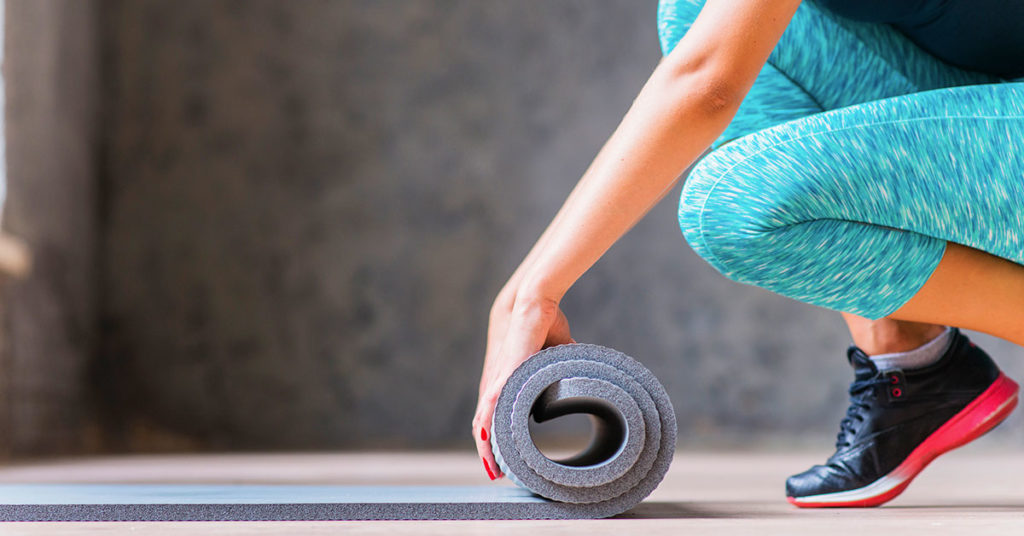Remember that an exercise routine contains three important phases:
- Warm up.
- Execution of the exercise.
- Stretching or cool down.
Here are some tips for exercising at home:
Kids
- Stretch to warm up the muscles, starting with the lower limbs, trunk, upper limbs. Perform rotations and stretching of the neck and head. Let’s take advantage of this moment so that the little ones learn to feel their body, to know it, and to value the importance of taking care of it by eating healthy, drinking water, exercising, and sleeping the hours required for their age.
- Walk and run around the house setting a time or goal.
- Go up and down the stairs.
- Jump small obstacles.
- Perform push-ups on your knees.
- Do squats.
- Dance.
It is recommended that all sessions last between 20 and 25 minutes to keep them active and prevent them from getting bored. These can be done twice a day by swapping the activity. If the children are very young, simply paying attention to them, making them dance, and being with them can work.
Let’s take advantage of new technologies to perform exercises through games and dance routines that exist on different platforms to activate their entire body.
Adults
A simple body and joint mobility should always be performed to warm up before the routine and avoid injuries. Here are some practical tips:
- Start with a simple activity. For example, 10 minutes of light jogging.
- Incorporate more basic exercises. For example, 10 squats.
- Continue with another simple exercise, but one that requires a little more complexity and effort. For example, 20 lunges.
- Finish with an exercise that requires more effort. For example, 10 push-ups.
With these exercises, you will have a basic routine to keep you active. You can start doing a few repetitions and increase them each week.
Another exercise alternative is:
- Get up and sit back down or squats.
- Leaning on the table stand on your tiptoes.
- Lying on the floor perform leg raises.
- Lying on your side on the floor, raise your legs.
- Supported on the wall, bed, or on the floor perform push-ups.
- Lunges.
- Abs.
- Weighted arm elevations (water bottle, package of rice, beans, or lentils).
- Weighted arm exercises (water bottle, package of rice, beans, or lentils).
- Weighted lateral raises (bottle of water, package of rice).
In each case, it is recommended to do 10 to 15 repetitions.
It is important to remember that the American College of Sports Medicine recommends that adults accumulate 150 minutes of moderate-intensity exercise per week, managing to involve large muscle groups to maintain good health.
Seniors
The US National Institute on Aging has developed an exercise plan to stay active while at home:
Exercise 1
Bring your head forward and backward as much as your joint allows, but without forcing it. Then bring your ear to your shoulder and bring your chin to your shoulder, slowly stopping in the middle.
Finally, move your head taking it to one side and another (as if saying no), as much as your articulation allows, without forcing it.
Do 10 repetitions for each move.
Exercise 2
Standing. Legs shoulder-width apart. Hands on the waist. Flex the trunk laterally. Return to the center and repeat on the other side. Repeat 10 times. In the end, put your hands on your waist, feet together. Rotate your hip to one side and the other by making circles with your pelvis. Do it at least another 10 times.
Exercise 3
Arms stretched in the air and knees bent. Move your right arm to your left side, and your left arm to your right side, each time with more rhythm and intensity.
Exercise 4
Stand about 15 cm from a table or the back of a fixed chair with your feet apart. Bend at the waist, lean into the chair until you’re about 45 degrees. Raise your leg back, stretch it slowly. Stay in this position. Begin to slowly lower your leg back to the starting position. Repeat the exercise with the other leg, alternating 10 times.
Exercise 5
Hold a dumbbell (or any other heavy object) in each hand with your arms at your sides. Bending your arms at the elbows, lift them towards your shoulders and then lower them towards your sides. Repeat 10 times.
Exercise 6
Place your hands outstretched against the wall. Slowly lower your body and come back up.
Exercise 7
Sit down. Lean slightly forward and stand up. Sit back down. Get back up. Repeat two sets of 10.
Exercise 8
Sit in a chair with an armrest. Lean forward slightly, keeping your back and shoulders straight. Hold on to the chair’s armrests and inhale. Put your feet under the chair, raise your heels and put all your weight on your toes. Push yourself up with your arms and lift yourself up as you exhale. Sit back down slowly as you inhale.
Exercise 9
Sitting, raise your right leg with your knee bent at 90 degrees. Keep your leg and foot elevated 10 to 15 cm off the floor for five seconds. Repeat 10 times, then switch legs and do 10 reps on the other leg.
Exercise 10
Sitting, cross your arms holding your shoulders. Bend down to the ground and twist to the left and right side each time. Take a deep breath and repeat 10 times.
Fuentes:
American College of Sport.
US National Institute on Aging.

